Poached apples and pears are a classic cool weather dessert, and a nice break from heavy endings to a meal. Cooking the fruit in wild fruit juice instead of wine is what this is all about.
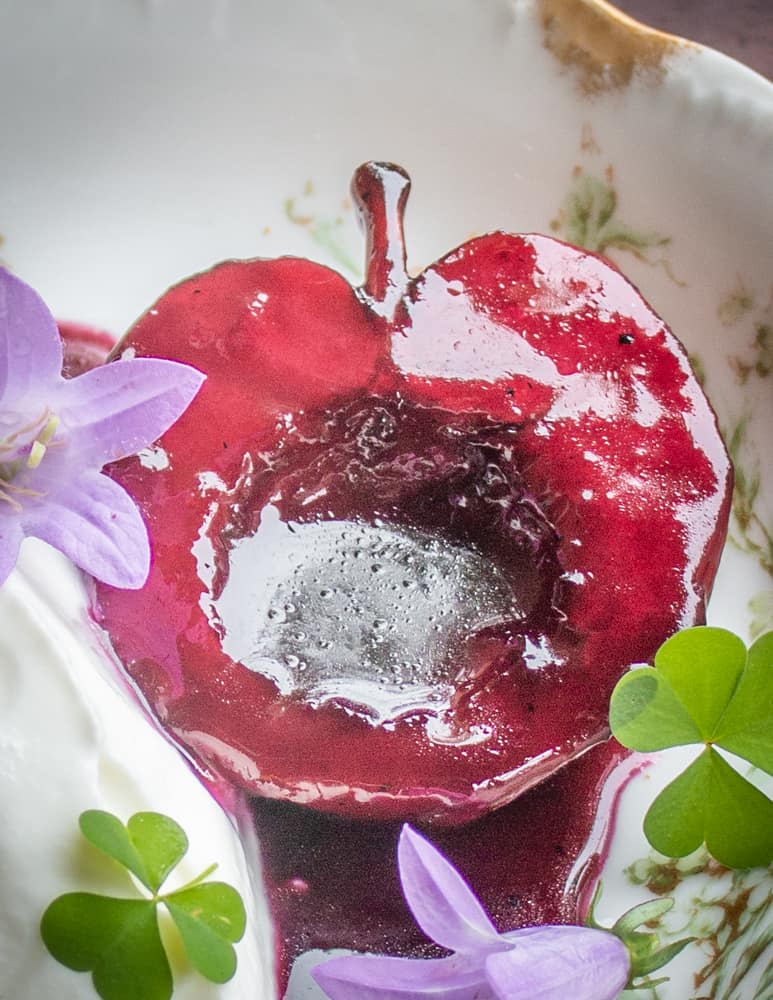
I came up with this out of necessity. A couple years ago I was cooking for a photo shoot up at Mark Dayton's cabin for the release of Askov Finlayson's new winter parka. I came up with a menu I could pull off for the crew in a small cabin kitchen for breakfast lunch and dinner for a couple days. I needed a streamlined menu of craft services (what crew food is known in film and photo parlance) that was easy to execute in a small, cramped space.
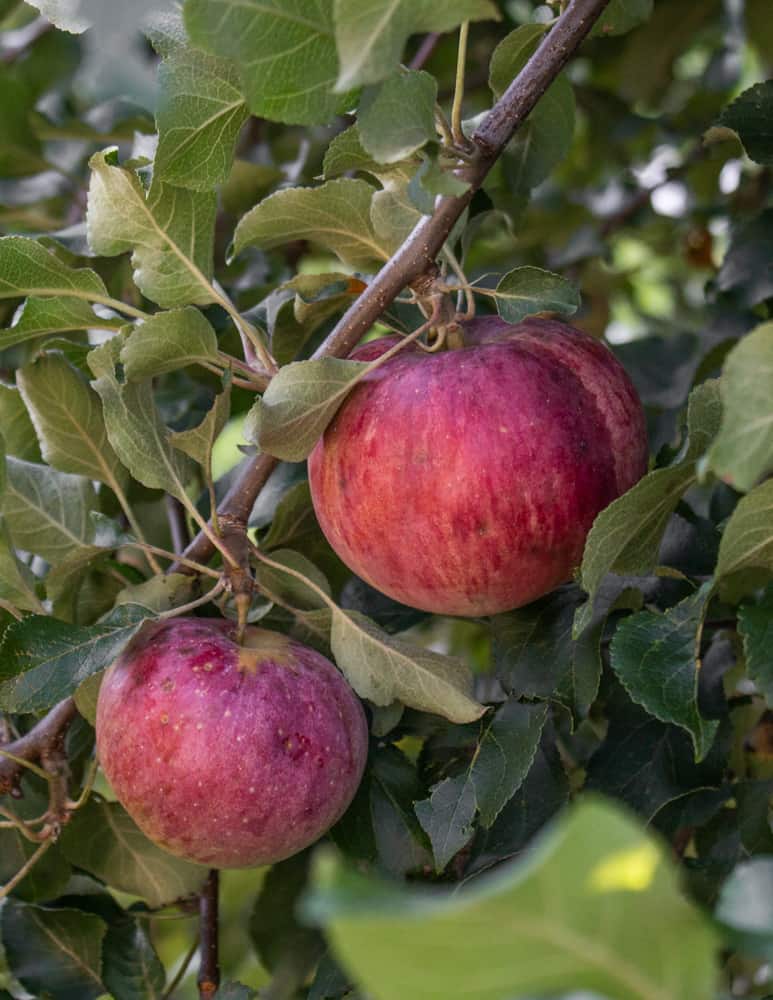
The only thing I had to work around was that one of the talents for the shoot was a strict vegan. Most things I was able to make vegan easily (except the slabs of fresh bacon), but I knew that the crew would appreciate some good home cooking after being out in the cold on the North Shore during the fall all day, every day, so I planned on making apple crisp for one of the desserts.
These poached apples, gently simmered in thick, tart wild grape syrup a la French poached pears, were the vegan alternative, and the bonus is that the technique is good applied to other firm fruits, too, especially pears. You can switch the fruit juices up too.
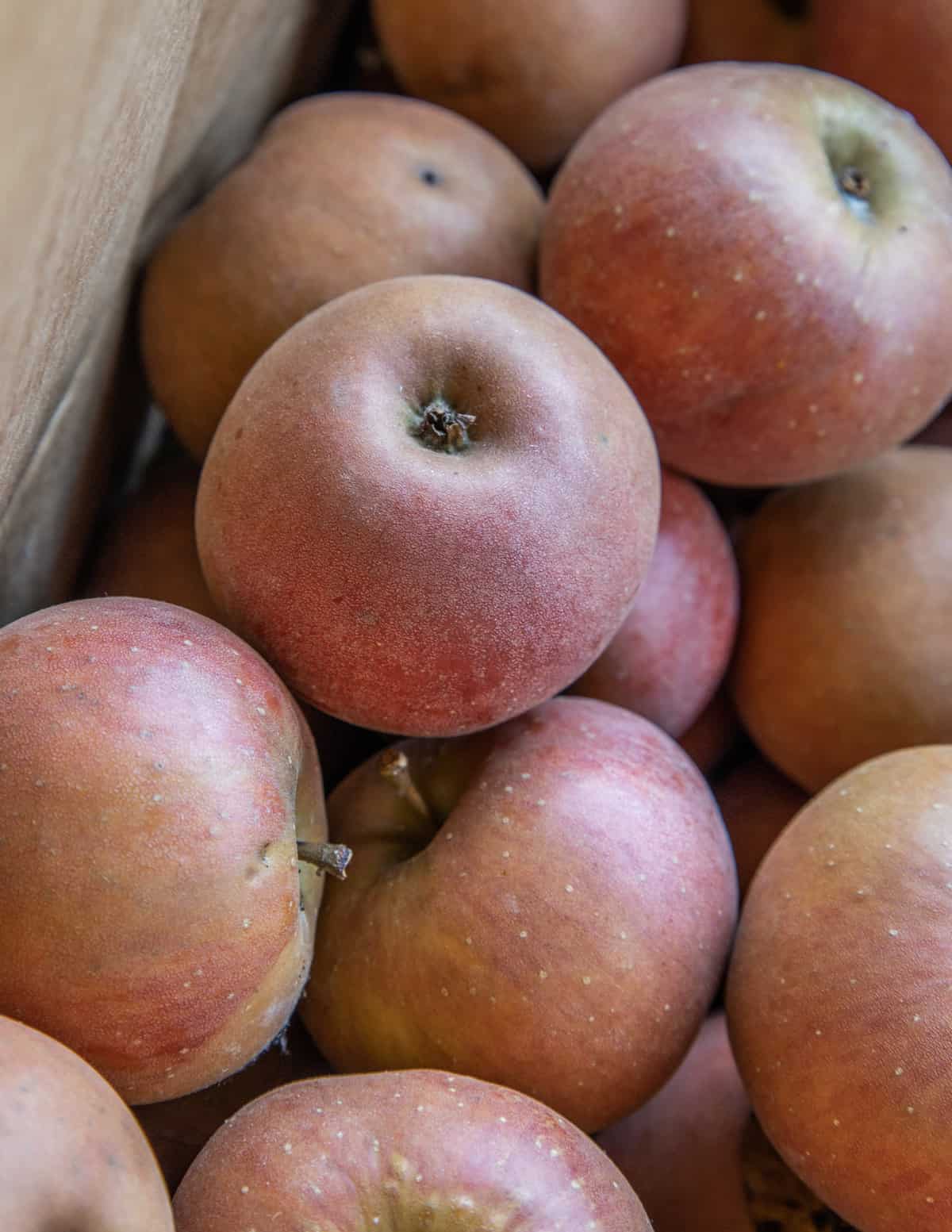
Wouldn't you know it, when the crisp came out the oven in all it's shimmering, buttery glory, the air perfumed with cinnamon that curls around you like a grandmother's hug, the model took one look at my warm poached apples with a dollop of fermented coconut yogurt I'd made just for her, and ate two helpings of apple crisp.
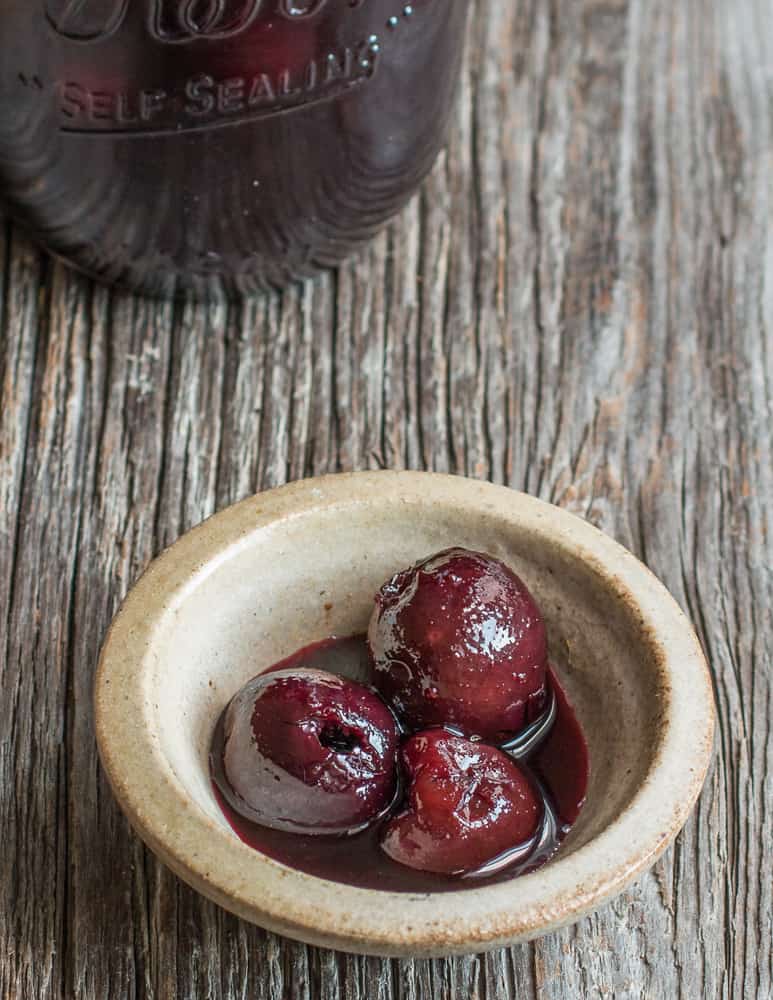
So, my assistant and I ate the poached apples. I couldn't help but smirk noticing how quick we (myself included) can throw the occasional dietary restriction to the wind once we're tempted with something we crave. Obey the crisp.
Either way, the experience gave me a great treatment for apples and pears (peaches and stone fruit too, just be gentle and barely cook them-see below) that I still use to this day.
Vacuum sealing for maximum efficiency
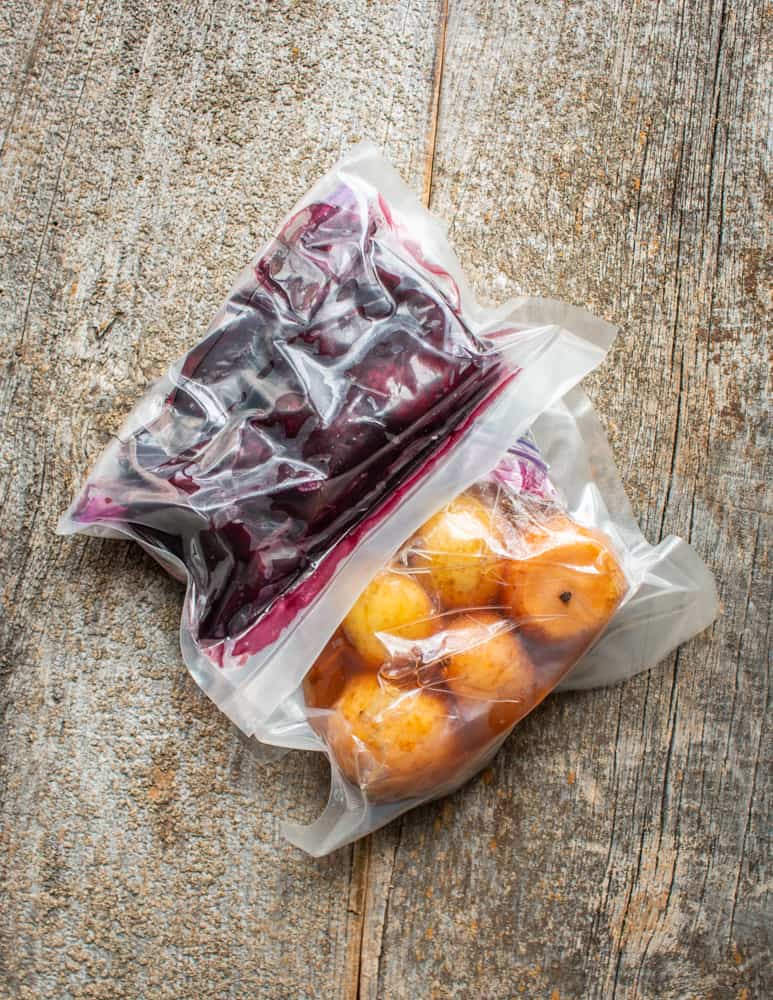
Traditionally you would slowly poach the fruit in a pot, but here, I vacuum seal the fruits and sauce so that it requires a fraction of the liquid you’d normally use, as well as allowing for flavor combinations that might be prohibitive due to cost and labor (precious wild fruit juices are the perfect example).
In most recipes, instead of the single cup of reduced fruit juice as I use below, you might add 4-5 times as much, depending on the size of your pan.
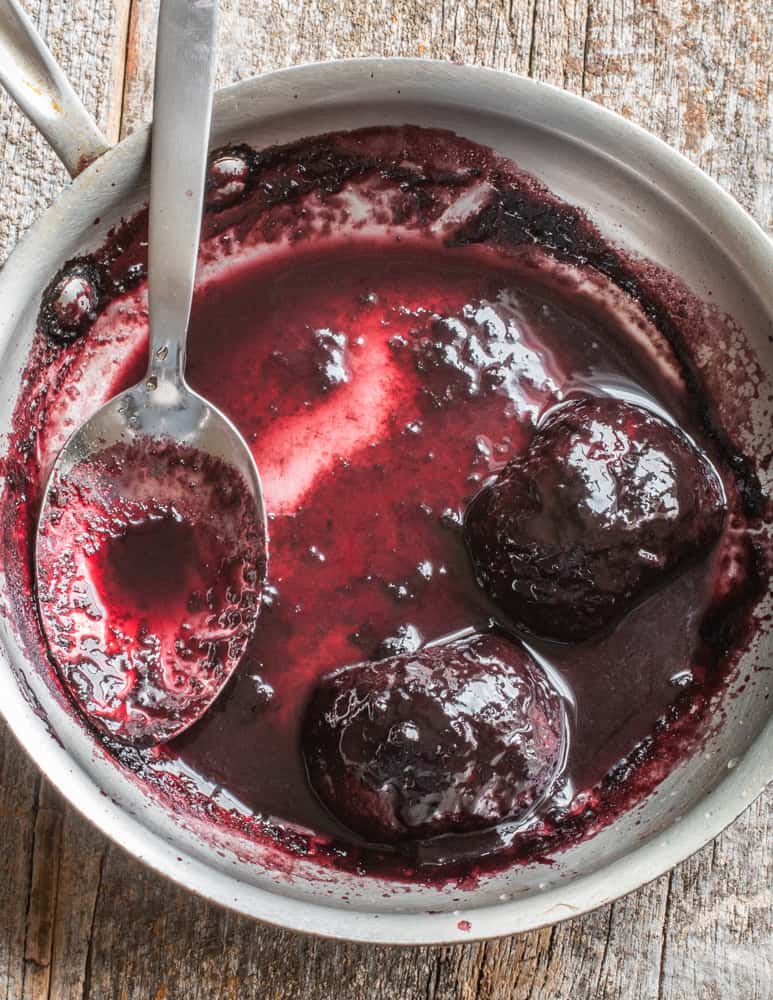
Deep-colored juices are my favorite, and make the apples come out looking like ripe, garnet gems infused with the flavor of whatever juice you use. They taste as rich and fruity as they look. Here's some wild fruit juices that would be good.
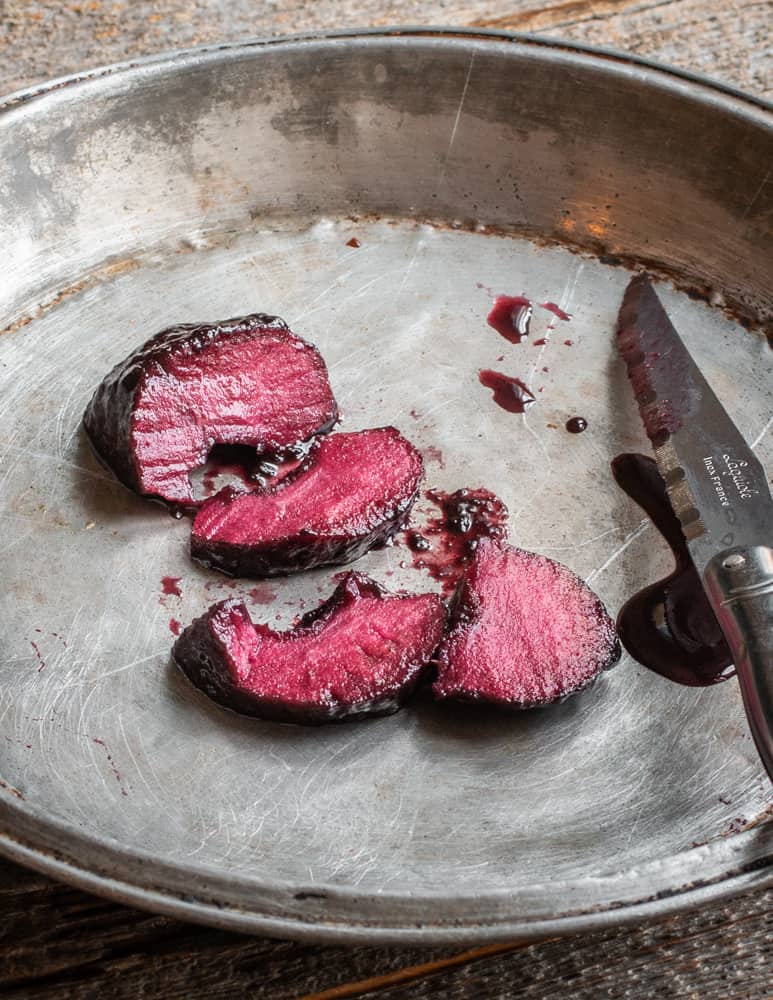
Wild fruit juices
- Aronia (make sure to use a cold extraction, as a warm one imparts tannins)
- Wild Grape (arguably the best)
- High Bush Cranberry (again, use a cold extraction here, and add some grated ginger to match the funky aroma)
- Wild cherry (more on this below)
Variations
Apple Cider Caramel
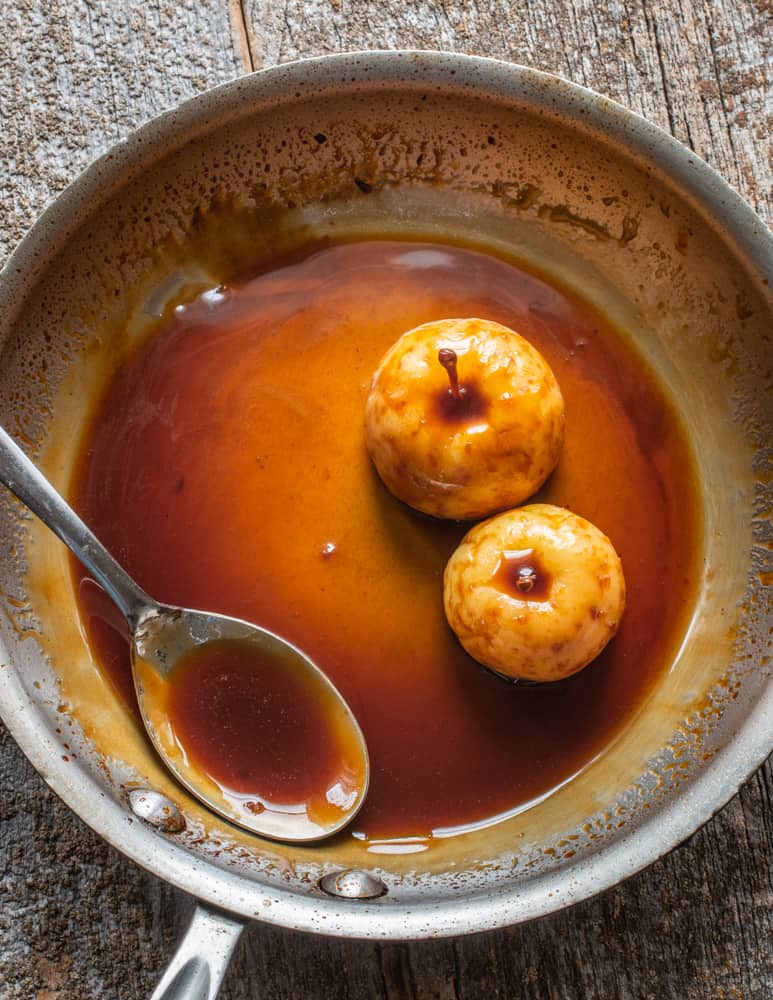
For an apple-on-apple version, cook apples in cider reduced by 75% When reheating, allow the sauce to reduce and toast around the edges of the pan a bit, don’t burn it, but allow it to get a little color.
Deglaze the pan with a little water to bring it back to a creamy consistency, and prevent the pan from getting too dark, then continue cooking. Add a glug of cream while it cooks for an American-style caramel. For an extra sparkle, add a dash of apple cider vinegar.
Wild Cherry Gastrique
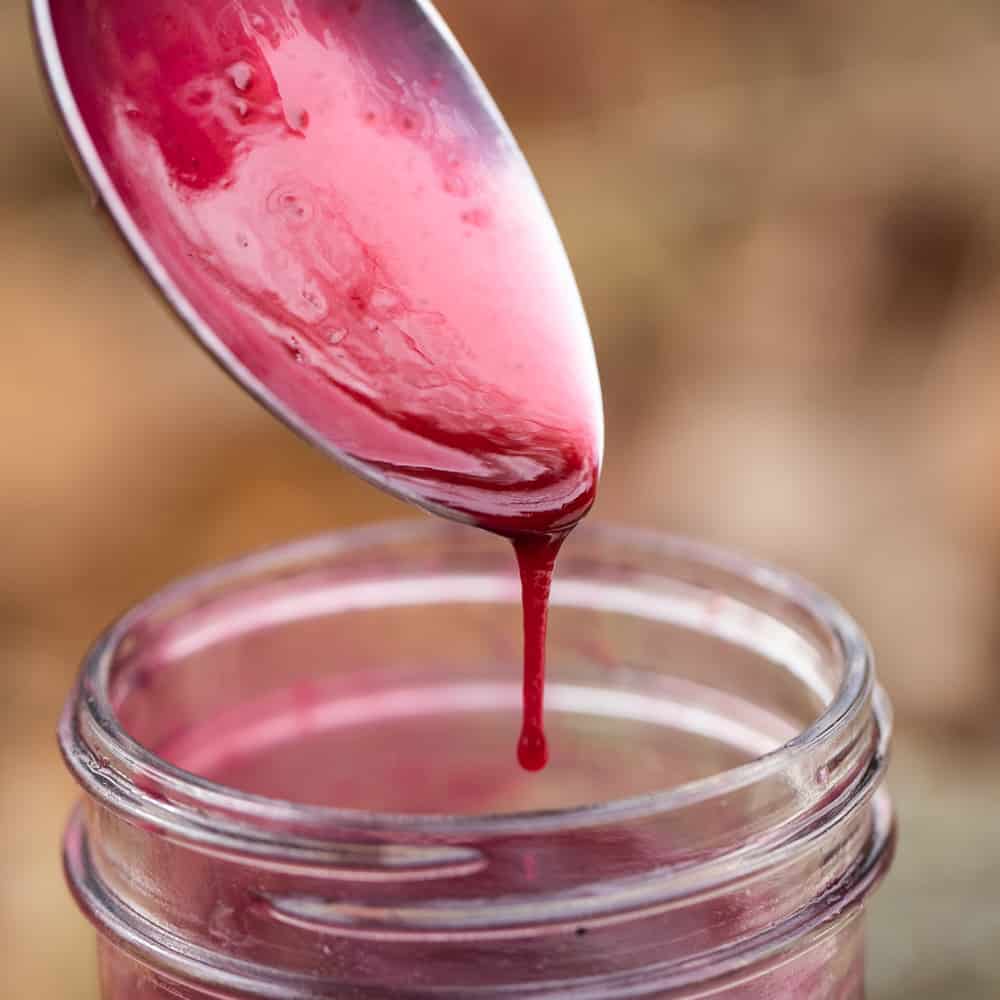
A botanical family pairing, as apples and cherries are both in the Rosaceae. My wild berry or stone fruit gastrique can be used as is without adding additional sugar, just pour some in a bag with the apples, poach, cool, and reheat. It will thicken quickly on the stove from the sugar already in the gastrique.
Mugolio
Using pine cone syrup or spruce tip syrup for the sweetener adds a nice, subtle flavor.
Adding Spices for Depth

"Mulled" Wild Grape
For the quantities listed below, wrap the following in cheesecloth and add to the vacuum bag: 2 cloves, ½ teaspoon toasted black peppercorns, ¼ inch thick slice of ginger or wild ginger, wild grape juice and sweeten with maple syrup.
Cow parsnip seed
A couple dried, untoasted cow parsnip seeds, preferably added in combination with cloves, nutmeg or cinnamon, have a nice flavor.
Spicebush berries
Use these all by themselves, very gently toasted and crushed. Strain the juice before reducing and serving.
Wild ginger
This is a great place to use wild ginger, start with a two-inch rhizome, light whacked with the back of a knife added to the bags with the apples.
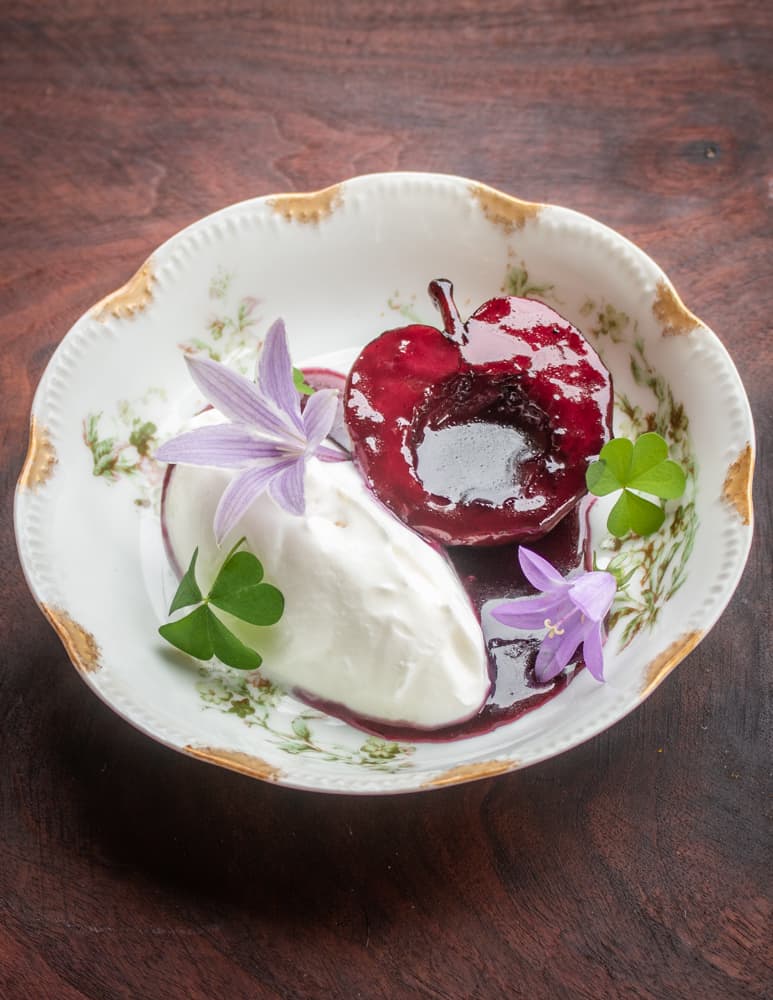
Apples Poached in Wild Fruit Juice
Equipment
- 1 sous vide machine
- 1 8 inch saute pan
Ingredients
- 3 large baking (non-mealy) apples such as granny smith or honeycrisp
- 1 cup strong wild fruit juice, such as wild grape, aronia, or wild cherry
- 3 TBSP sweetener, such as maple, mugolio, or honey
- 1 TBSP unsalted butter
- tiny pinch Kosher salt
- 1 teaspoon lightly toasted and crushed spicebush berries optional, a pinch of cinnamon or cloves is great too, or see my notes on other spices.
Serving suggestions
- Candied, toasted nuts
- Whipped creme fraiche sweetened with maple syrup or whipped cream
Instructions
Preparing the apples
- Take the apples, peel and half them vertically, then scoop out the seeds. You can leave the stem for looks if you like. Put the apple halves in a gallon Zip-top bag, then pour in 1 cup of strong fruit juice, such as wild grape along with the sweetener, salt, and spicebush or other seasonings.
Sous vide method
- Remove air from the bag (I close the bag, then suck the air out of a corner) then put the Zip-top bag in a vacuum bag, and vacuum seal. Cook the apples using a sous-vide circulator at 165F for 1 hour, weighing them down with a plate if necessary to keep them under the water, then chill and refrigerate.
- Kept in their vacuum bag, the apples will last for weeks. After the bag is opened, consume the apples within a few days.
Without sous vide
- If you don't want to vacuum seal the apples, you could put the apples in a vessel they will fit in snugly, then just barely cover with the juice (it may take more than I outline here) cover with parchment, foil, and bake at 200 for 45 minutes or until barely tender, then remove, cool to room temp and refrigerate, covered until ready to serve.
Reheating and Serving
- Reheating is where the magic happens. Cut open the bag and put the apples and juice in a pan wide enough so they’re in a single layer. Heat the pan (they can be baked at 350 in a baking dish too), spooning the juices over the apples as it reduces, and gradually adding a tablespoon of unsalted butter, stirring and moving the pan to help it incorporate and thicken the sauce.
- When the sauce turns into a thick, shiny glaze, spoon the apples over something creamy like ice cream or yogurt, then quickly return the pan back to the heat, add some water if the sauce got thick or separated, and reheat, whisking to emulsify it an adjust it to a consistency that coats a spoon by reducing, or adding a little more water as needed. Use your intuition. When the sauce looks good to you, spoon it, piping hot over the apples and eat. Adding toasted or candied nuts is a good addition.

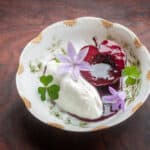
Nancy Oviatt
I have several jars of failed-to-jell chokecherry jelly. Do you think that would be usable for the juice? It’s got quite a lot of sugar in it but is still quite tart.
I’m enjoying “Flora” immensely and am planning many new meals this spring!
Alan Bergo
Yes. Add a good splash of red wine or champagne vinegar to calm the sugar.
spwilcen
Helpful tips to be tucked away for later use. Thank you.